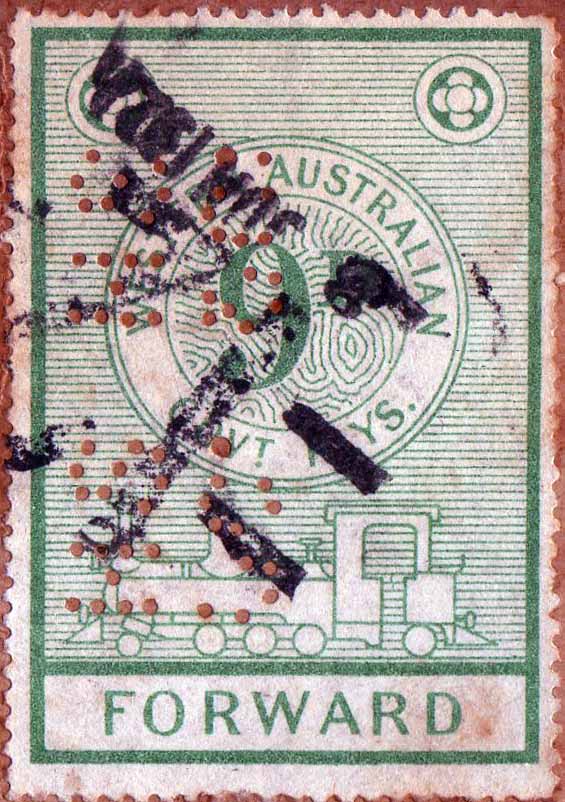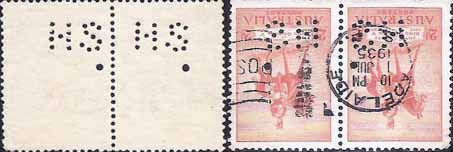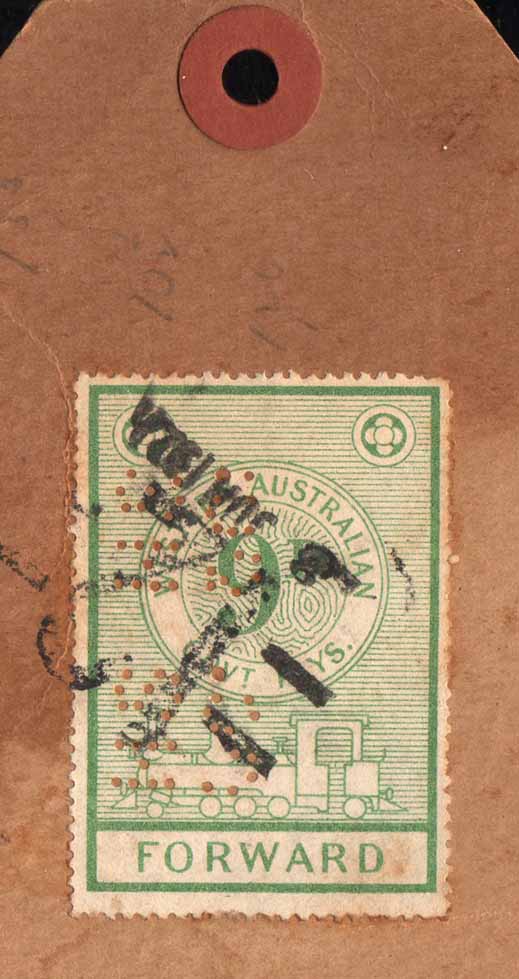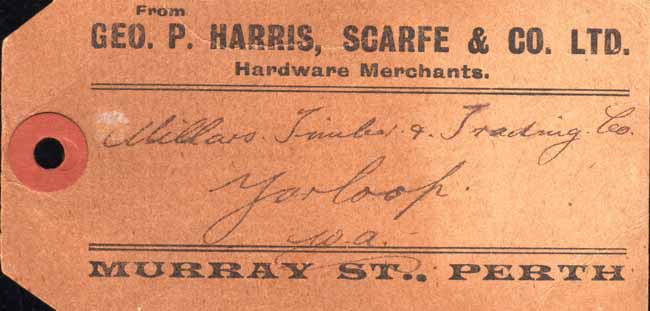|
Private Revenue Perfins of Western Australia An Elsmore Coath production The authors would welcome your comments additions or input into this work B C D F G H I K L M N O P R V W Other H -------------------------------------------------------- HS/&Co..a
User: Harris Scarfe & Co.
Ltd. Merchants, Ironmongers. Later Department Store Address: 297-301 Murray St, Perth, S.A. Railway Use: 1923 Series 9d. Rarity Scale: 1923 Series 9d R5. Background: *The company that became Harris Scarfe & Co began in Adelaide in 1849 when George Harris and John Lanyon arrived in Adelaide from England and formed a partnership as Lanyon & Harris (hardware and ironmongers). They opened their first premises in Hindley St, Adelaide but in 1855 Lanyon returned to England, leaving Harris as the sole owner and the business was renamed Geo. P. Harris. Subsequently Lanyon opened a buying office in London that serviced Geo. P Harris and other South Australian businesses. In 1857 (some sources say 1866) Harris took on new partners George Scarfe and Richard Smith and the company became Geo. P. Harris Scarfe & Co and this arrangement was formalised in July 1871. In 1877 the company purchased the Grenfell St address that it still occupies today, and here they offered a broad range of household, agricultural and industrial items. Harris returned to England in 1873 where he died on 26 November that year, aged 52. Scarfe continued on as chairman of the business until he passed away in April 1903, aged 76, but the company still carries their names today. The business continued to grow and in 1920 the company became Harris Scarfe Ltd. In addition to its Adelaide retail activities the company manufactured leather goods as well as conducting a large wholesaling operation, with a team of commercial travellers who visited country regions throughout South Australia. In 1971, Harris Scarfe Ltd was acquired by Baradeen Quest Pty Ltd a subsidiary of Investment and Merchant Finance Corporation Limited (IMFC). Later in 1976 IMFC was acquired by Charles Davis Ltd and this lead to a period of expansion with the Harris Scarfe Adelaide site becoming a Department Store and the hardware and industrial products sold through a subsidiary 'Harry’s,' which was located in Mile End. The success of Harry's led Harris Scarfe's parent company, Charles Davis Limited, to acquire other hardware retailers, including Lloyd's in South Australia, Campbell’s in Queensland, and McEwans in Victoria and New South Wales. In 1989, the hardware businesses were sold in a management buyout but Charles Davis Ltd through Harris Scarfe continued as a retail department store. During the 1990s Harris Scarfe began an era of unprecedented growth across Australia acquiring many sites from other retailers including David Jones, John Martins, Myer, Stirlings, and many of the sites formally used by the failed Venture retail chain. To this they added a merger with the Tasmanian department store chain FitzGeralds in 1995. At their peak Harris Scarfe operated 38 stores in all Australian States. In 2001, Harris Scarfe suffered cash flow problems and these could not be addressed and the company opted to enter voluntary receivership and its shares were withdrawn from the Australian Stock Exchange. Following this Harris Scarfe was sold to a private consortium with little money going to shareholders this consortium rationalised store locations and made modest growth while sales grew. They acquired the Allens department store chain (NSW/ACT) and from 2006 started to expand into new sites in South Australia and Victoria. Device: The HS/&Co..a pattern is produced by a two-die device in a horizontal array. The dies are essentially the same and so we list it as a single pattern. Initially there were two HS/&Co. devices, which were located in Perth, and Adelaide and these were both two-die devices in a horizontal array.
Perth device - Used 1908 until 1922 --
Adelaide device – Used 1907 until at least 1919 The patterns made from the dies across the two devices are very similar, but with comparisons of clear strikes you will note slight differences that will allow you to at least separate out the two remotely located devices. The main characteristic of the HS/&Co. devices is the large pin that forms the main part of the 'O' of 'Co.' In about 1920 the Adelaide device was altered with the removal of the '&C.'. Later in about 1922 the Perth device ceased to be used.
The change in the Adelaide device spawns a new pattern, HS/o.a and this is listed in the South Australian chapter. As can be seen from this pair of 1935 KGV Jubilees, the large pin that constituted the main part of the 'O' of 'Co' was retained in the two dies of the device. It is notable that only the Adelaide device was altered in this way. All readable postmarks that we have seen on the HS.a, are from Adelaide or from other South Australian locations or Broken Hill, which is just across the SA border in NSW. The Adelaide HS/&Co. device is not reported on the revenue stamps of South Australia. The Perth HS/&Co..a device is found used on the postage stamps of Western Australia and later the postage stamps of Australia. Related patterns: Refer to other Harris Scarfe & Co patterns in: SA: HS/o.a *Harris Scarfe website *TROVE
-------------------------------------------------------- B C D F G H I K L M N O P R V W Other © copyright 2011 |






